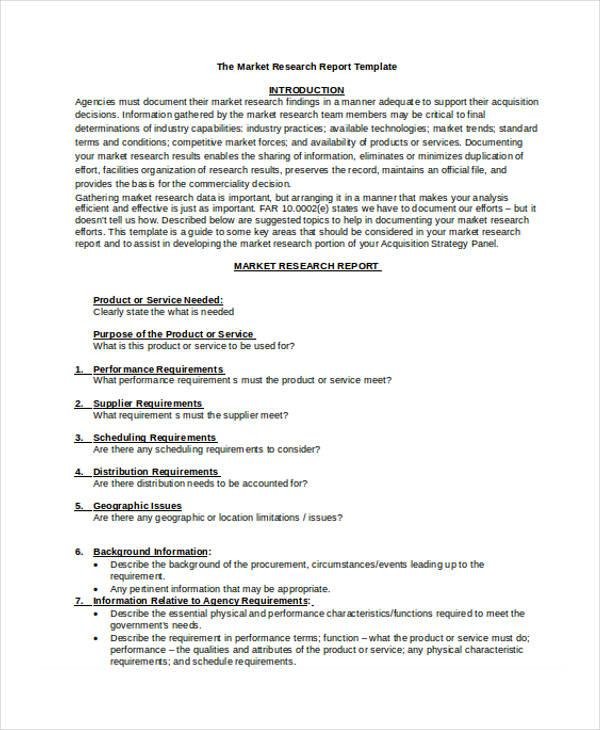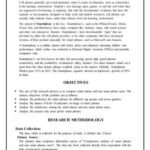research report layout

Introduction to Research Report Layout
In an age where information flows freely and data is generated at an unprecedented rate, the ability to effectively organize and present research findings has never been more crucial. A well-structured research report serves not only as a vessel for communicating knowledge but also as a roadmap guiding readers through complex ideas. The layout of a research report plays an essential role in enhancing clarity, ensuring accessibility, and fostering engagement with the material.
Effective research report layouts typically encompass several key components: a clear title, an abstract summarizing the research, an introduction outlining the objectives, and well-organized sections that detail methodology, results, and conclusions. Each section should be designed to help readers navigate the report with ease and to build a coherent narrative that connects the various elements of the research. The visual presentation, including headings, charts, and references, enhances the reader’s ability to grasp the information quickly while maintaining interest in the content.
As we delve into the intricacies of research report layout, we will explore best practices for structuring your report, common pitfalls to avoid, and tools that can aid in creating a polished final product. Whether you’re an academic, a professional researcher, or a student embarking on your first project, understanding the foundational elements of an effective research report layout will empower you to showcase your findings with confidence and clarity.
Understanding the Fundamental Structure of a Research Report
To grasp the essence of a research report, it is crucial to break down its fundamental components. Each section serves a specific purpose and contributes to the overall clarity and coherence of the document. The major sections commonly found in a research report include:
- Abstract: A summary of the entire report, highlighting the main objectives, methodologies, and findings.
- Introduction: Provides context, background information, and a clear statement of the research question.
- Methodology: Describes the research design, participants, and procedures used to collect and analyze data.
- Results: Presents the findings of the study through text, tables, and figures without interpretation.
- Discussion: Interprets the results, addresses the research question, and discusses implications and possible future research.
- References: Lists all the sources cited throughout the report, following a specific citation style.
Each component plays a vital role in ensuring that readers fully comprehend the research’s significance and methodology. To further illustrate the report’s structure, here’s a simple table that focuses on each section’s main objective:
| Section | Main Objective |
|---|---|
| Abstract | Summarizes the entire report |
| Introduction | Sets the stage for the research |
| Methodology | Explains how the research was conducted |
| Results | Shares the data collected |
| Discussion | Interprets and explains the findings |
| References | Provides source acknowledgment |

Essential Sections to Include for Clarity and Coherence
When crafting a research report, incorporating essential sections is vital for enhancing clarity and coherence. Start with a Title Page that succinctly summarizes the report’s core topic. This should be followed by an Abstract, providing a brief overview of key findings and methodology. Including a Table of Contents helps guide readers through the document, allowing for easy navigation of sections such as Introduction, Methodology, Results, and Discussion. Each of these key sections plays a crucial role in presenting a logical flow of information, ensuring that readers can follow your research journey without confusion.
Additionally, consider implementing an effective Literature Review section to situate your research within existing studies, demonstrating its relevance and significance. A well-structured Methodology part elucidates the processes utilized, granting transparency to the reader. The Results section should succinctly present findings using tables or graphs, while the Discussion explores the implications of these results. a References section is essential for acknowledging sources, enhancing the report’s credibility, and providing avenues for further research. These components collectively foster a comprehensive understanding of the research, ultimately reflecting professionalism in your work.

Visual Aids: Enhancing Communication through Effective Design
In crafting a compelling research report layout, the role of visual aids cannot be overstated. Charts, graphs, and infographics serve not only as supplementary tools but as pivotal elements that distill complex information into easily digestible formats. A well-designed visual can transform a page of dense text into an engaging narrative that captures attention and enhances understanding. Therefore, when considering design elements, it’s crucial to prioritize clarity and consistency. Think about the following tips for impactful visuals:
- Choose colors wisely: Use a color scheme that aligns with your report’s theme to ensure harmony.
- Select appropriate chart types: Different data sets may require different visual representations.
- Employ white space effectively: This can help to avoid clutter and highlight important information.
The layout should flow logically, guiding the reader through the research without overwhelming them. A well-structured table can be invaluable for presenting data succinctly. Consider the following example layout:
| Element | Description |
|---|---|
| Title Page | Includes the report title, author, and relevant date. |
| Abstract | A brief summary highlighting key findings and objectives. |
| Main Body | Dives into research methodology, results, and analysis with appropriate visuals. |
| References | List of sources that informed the research, formatted according to chosen guidelines. |

Best Practices for Formatting and Presentation in Research Reports
Clear formatting is essential for effective communication in research reports. By adopting a well-structured layout, you can guide your readers through the content, making it easier to digest complex information. Start with consistent headings and subheadings that allow for efficient navigation. Use bullet points or numbered lists to highlight key findings or recommendations, as this format enhances readability and aids in retention. Additionally, incorporate white space strategically to prevent overcrowding, allowing your audience to focus on vital sections without distraction.
Consider leveraging tables and figures to present data visually, making complex information more accessible. Organize tables with clear headings and concise labels to facilitate understanding. Here’s a simple example of a table showcasing key research findings:
| Research Area | Key Findings | Implications |
|---|---|---|
| Social Impact | Increased engagement by 30% | Enhanced community support initiatives |
| Economic Trends | Growth rate improvement of 15% | Investment in local businesses |
| Health Outcomes | Reduction in hospital visits by 25% | Focus on preventive healthcare |
By prioritizing clarity and visual appeal, your research report can effectively convey critical information, ensuring that your audience is not only informed but also engaged.
Final Thoughts
As we conclude our exploration of research report layout, it becomes clear that presenting your findings effectively is just as crucial as the research itself. A well-structured report not only enhances clarity but also guides your audience through your insights seamlessly. Whether you’re organizing your sections thoughtfully or ensuring proper formatting, each element plays a vital role in communicating your message. Remember that good design and layout can elevate your work, making it accessible and engaging. By investing time in crafting a polished report, you not only showcase your hard work but also foster a deeper understanding of your research among peers, stakeholders, and the wider community. Embrace the art of layout, and let your research shine!




